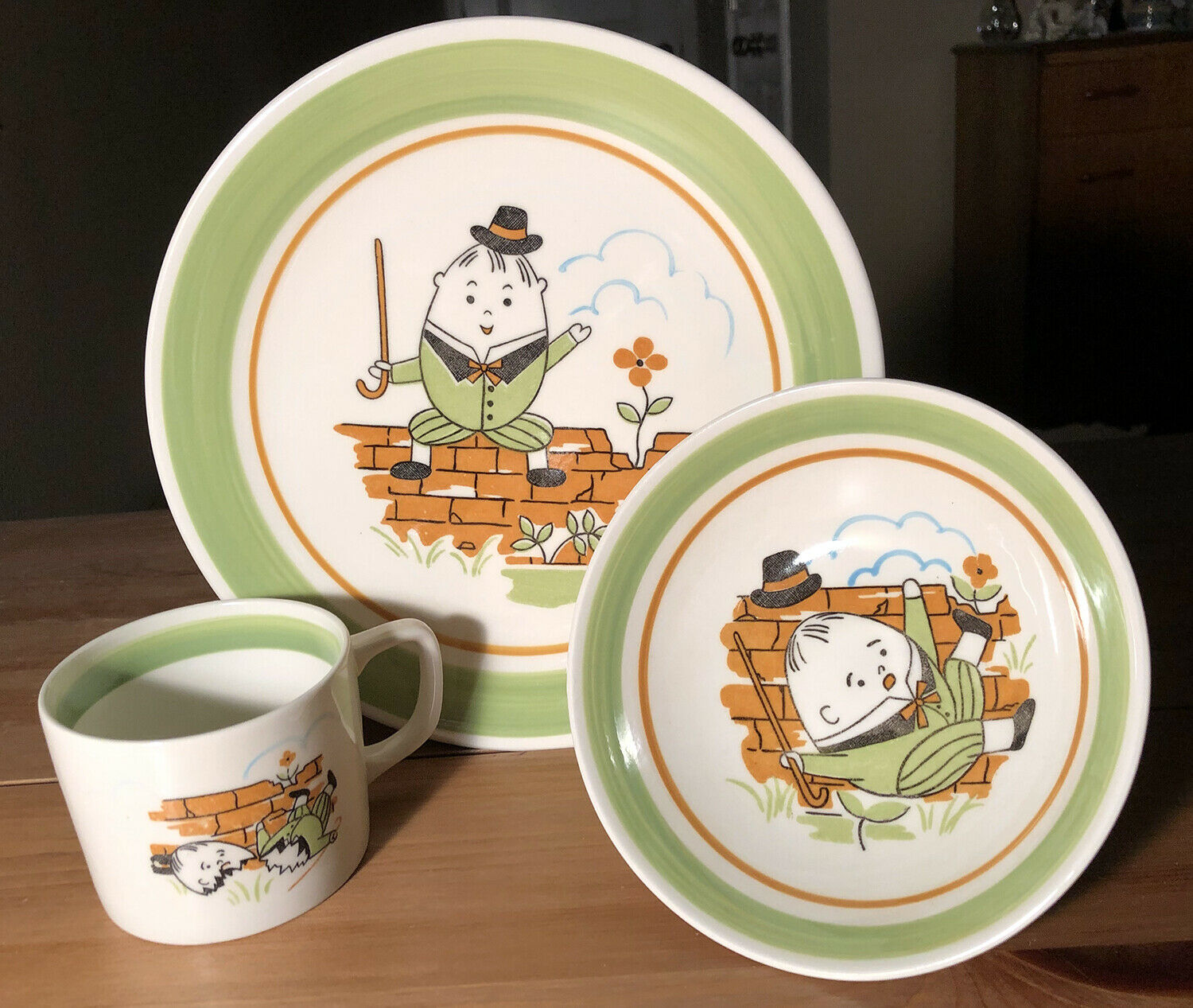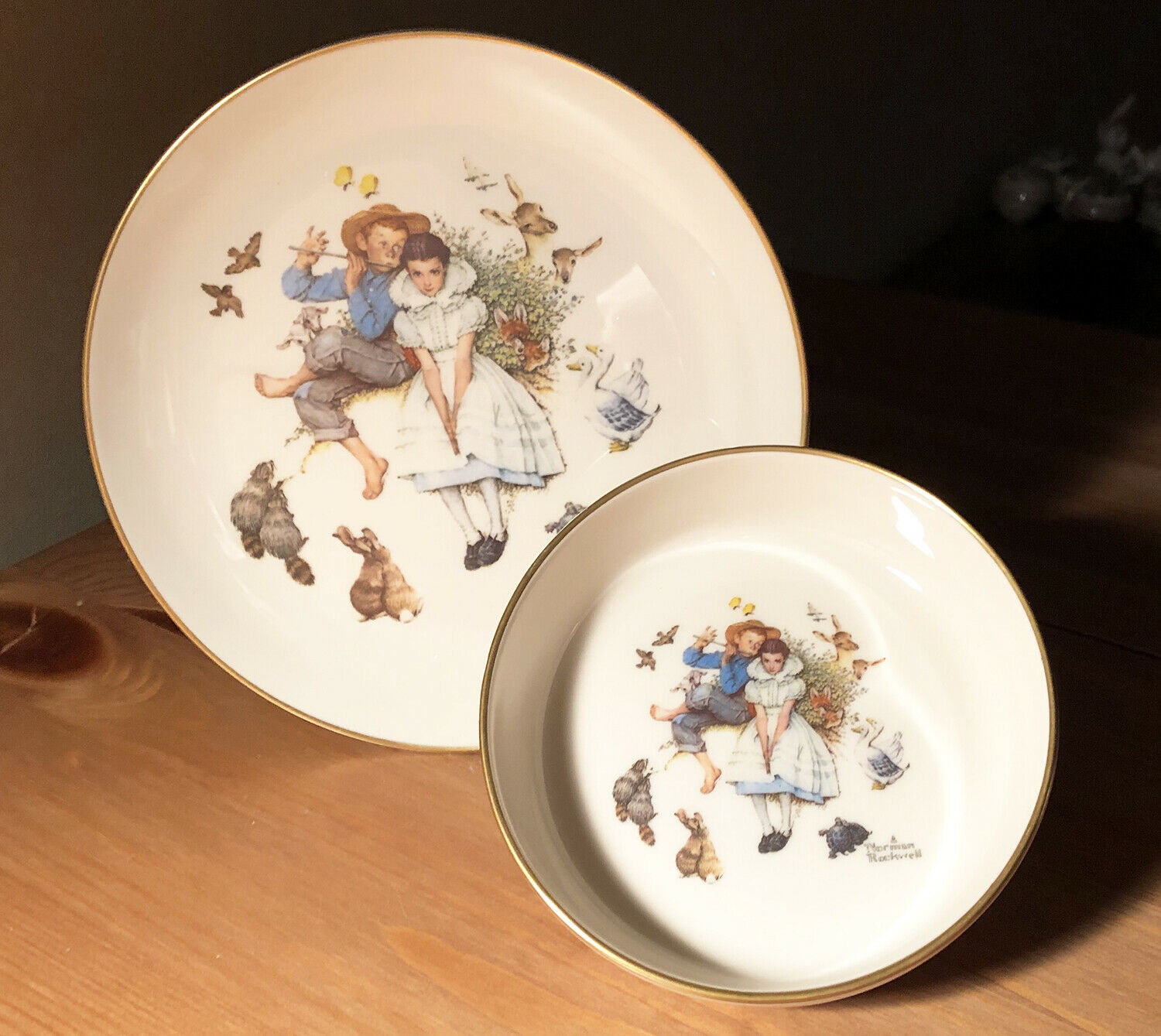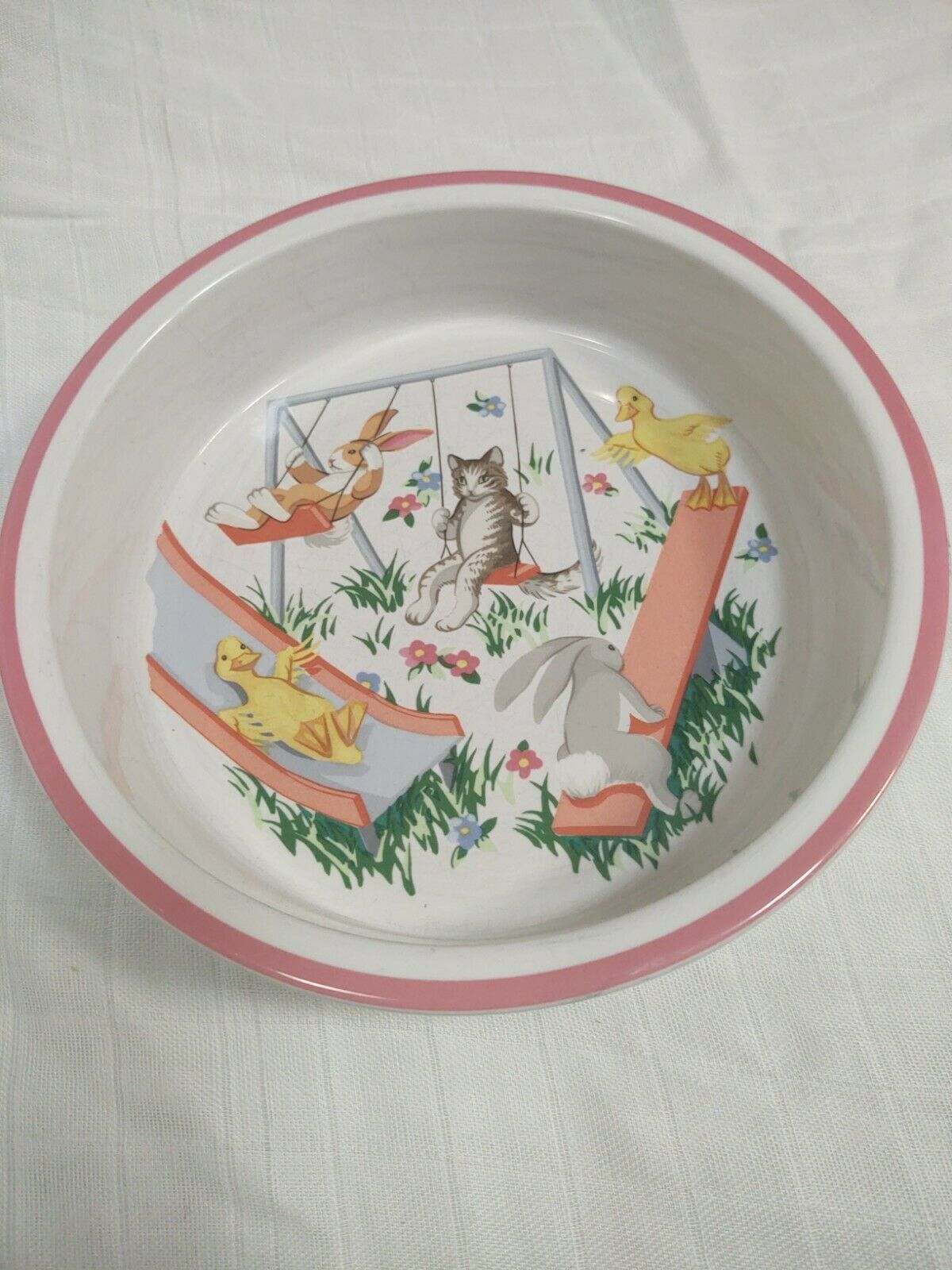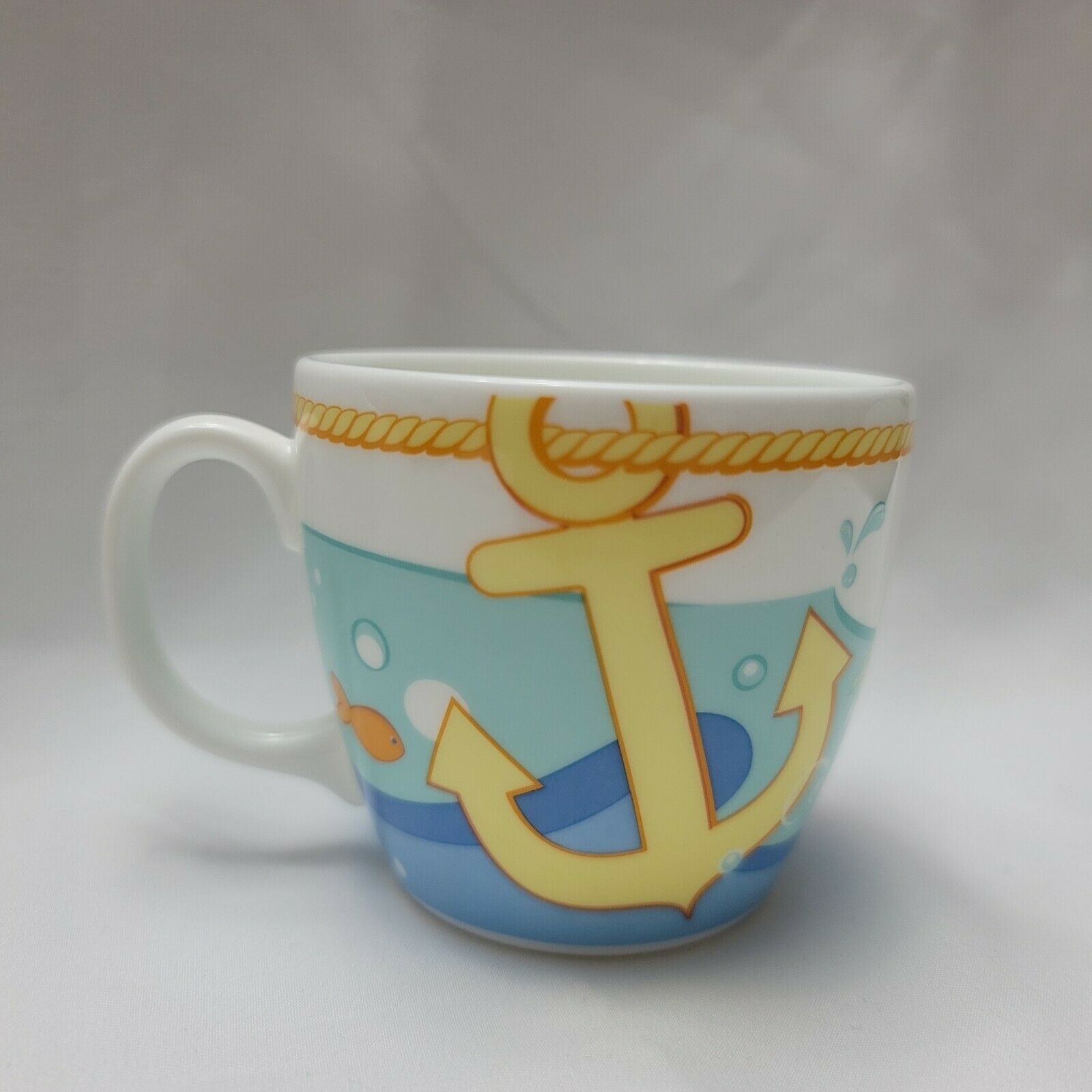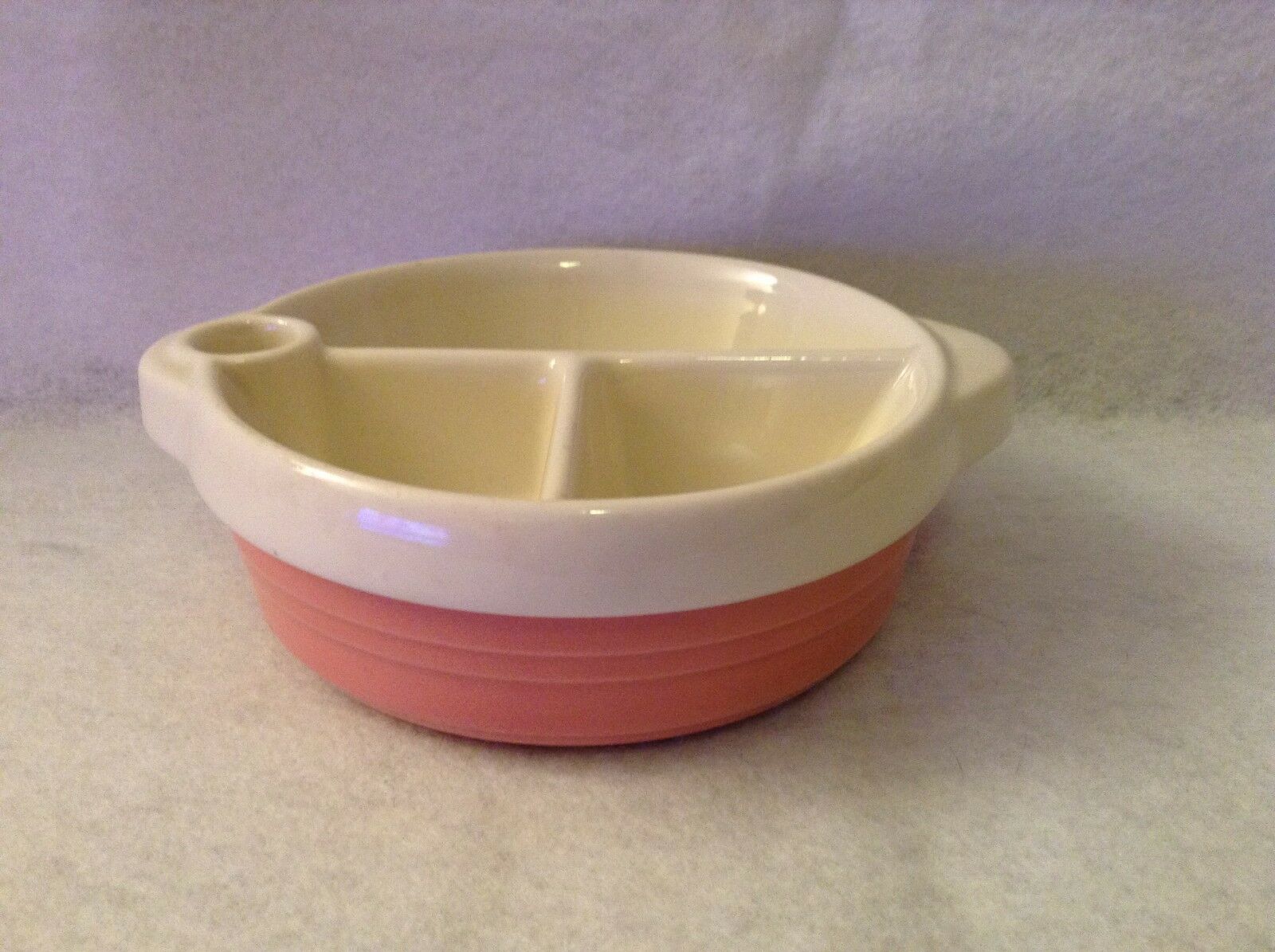-40%
japan boeki antique humpty dumpty story childs dinner srvc bowl cup dish/plate
$ 132
- Description
- Size Guide
Description
the setthe outside of the bowl has a small spot where there is like a folding of the ceramic (under the glaze)—so it came out of the production process that way. (see second image.) otherwise i can find no issues.
this is a very intriguing set (art least to me). i think the absolute coolest thing about the set is the fact that the 3 dishes together illustrate the story of humpty dumpty in action (they all show him in a distinct state): the plate shows him first sitting on the wall. the bowl shows him in the act of falling (the movement very well connoted), and the cup shows the final outcome of him being irreversibly broken: rally quite sophisticated. from the little i could find, this clover mark circumscribed by a wreath is the mark of the nihon yoko boeki company. they apparently started using the mark in 1891 (when they started). but this set is, from its aesthetic, probably from the first fourth of the 20th century: has a decent hint of art deco in it (the cup handle also), though that can sometimes be coincidental, mistaken from the simplicity of nursery rhyme illustrations. (farther below, you can read more about the mark.) this is a child/s set with very much an illustration quality depiction of humpty dumpty. in trying to find out more about the set, i come to learn that the story of the humpty dumpty nursery rhyme is quite long and elaborate. (you can read more about it below, information i got from wikipedia.). what the rhyme has in common across the centuries is the first couple of lines... it's the rest of the rhyme that has a very intriguing story being an allegory varying from king richard iii of england to a number of different things.
the set appears to have never been used, as old as it is. (mom only displayed it for a long time.) this whole set is very squat, which makes the center of gravity of each piece very low, which is great for a child. the plate is 9 1/2" in diameter and sits 3/4" tall from the surface on which it rests. the cup is 3 1/2" diameter at the mouth and stands 2 3/8" tall. the bowl is 6 1/4" in diameter at the mouth and it sits 2" tall. all are hallmarked with the mark of the yoko boeki company and «japan» (see sixth image).
about the hallmark of nippon (or nihon) yoko boeki company (1891–present)
[from: figurines-sculpture.com/wreath-with-cloverleaf-and-japan-on-reticulated-teacup-and-saucer.html]
...yours is a rather lovely porcelain cup by nihon yoko boeki who are difficult to research due to lack of information about exactly who they are and where they are based.
...nihon yoko boeki have been going a while, clearly...they apparently started using this clover mark in 1891, though this version may date from the late 1910s or early 1920s. again, I am not sure of my facts, so you will have to research for further verification.
the
real
story of humpty dumpty
[from: en.wikipedia.org/wiki/humpty_dumpty]
nursery rhyme
published 1797
humpty dumpty is a character in an english nursery rhyme, probably originally a riddle and one of the best known in the english-speaking world. he is typically portrayed as an anthropomorphic egg, though he is not explicitly described as such. the first recorded versions of the rhyme date from late eighteenth-century england and the tune from 1870 in james william elliott's
national nursery rhymes and nursery songs
. its origins are obscure, and several theories have been advanced to suggest original meanings.
humpty dumpty was popularised in the united states on broadway by actor george l. fox in the pantomime musical
humpty dumpty
. the show ran from 1868 to 1869, for a total of 483 performances, becoming the longest-running broadway show until it was surpassed in 1881. as a character and literary allusion, humpty dumpty has appeared or been referred to in many works of literature and popular culture, particularly english author lewis carroll's 1871 book
through the looking-glass
, in which he was described as an egg. the rhyme is listed in the roud folk song index as № 13026.
lyrics and melody
the rhyme is one of the best known in the english language. the common text from 1954 is
humpty dumpty sat on a wall,
humpty dumpty had a great fall.
all the king's horses and all the king's men
couldn't put humpty together again.
it is a single quatrain with external rhymes that follow the pattern of aabb and with a trochaic metre, which is common in nursery rhymes. the melody commonly associated with the rhyme was first recorded by composer and nursery rhyme collector james william elliott in his
national nursery rhymes and nursery songs
(london, 1870).
the earliest known version was published in samuel arnold's
juvenile amusements
in 1797 with the lyrics:
humpty dumpty sat on a wall,
humpty dumpty had a great fall.
four-score men and four-score more,
could not make humpty dumpty where he was before.
william carey richards (1818–1892) quoted the poem in 1843, commenting, «when we were five years old ...the following parallel lines... were propounded as a riddle ...humpty-dumpty, reader, is the dutch or something else for an egg«».
a manuscript addition to a copy of mother goose's melody published in 1803 has the modern version with a different last line: «could not set humpty dumpty up again». it was published in 1810 in a version of gammer gurton's
garland
.
humpty dumpty sate on a wall,
humpti dumpti had a great fall;
threescore men and threescore more,
cannot place humpty dumpty as he was before.
in 1842, james orchard halliwell published a collected version as:
humpty dumpty lay in a beck.
with all his sinews around his neck;
forty doctors and forty wrights
couldn't put humpty dumpty to rights!
the modern-day version of this nursery rhyme, as known throughout the uk since at least the mid-twentieth century, is as follows:
humpty dumpty sat on a wall,
humpty dumpty had a great fall;
all the king's horses
and all the king's men,
couldn't put Humpty together again.
according to the oxford english dictionary, in the 17th century the term «humpty dumpty» referred to a drink of brandy boiled with ale. the riddle probably exploited, for misdirection, the fact that «humpty dumpty» was also eighteenth-century reduplicative slang for a short and clumsy person. the riddle may depend upon the assumption that a clumsy person falling off a wall might not be irreparably damaged, whereas an egg would be. the rhyme is no longer posed as a riddle, since the answer is now so well known. similar riddles have been recorded by folklorists in other languages, such as «boule boule» in french, «lille trille» in swedish and norwegian, and «runtzelken-puntzelken» or «humpelken-pumpelken» in different parts of germany—although none is as widely known as humpty dumpty is in english.
meaning
the rhyme does not explicitly state that the subject is an egg, possibly because it may have been originally posed as a riddle. there are also various theories of an original «humpty dumpty». one, advanced by katherine elwes Thomas in 1930 and adopted by robert ripley, posits that humpty dumpty is king richard iii of england, depicted as humpbacked in tudor histories and particularly in shakespeare's play, and who was defeated, despite his armies, at bosworth field in 1485.
in 1785, francis grose's
classical dictionary of the vulgar tongue
noted that a «humpty dumpty» was «a short clumsey [sic] person of either sex, also ale boiled with brandy»; no mention was made of the rhyme.
punch in 1842 suggested jocularly that the rhyme was a metaphor for the downfall of cardinal wolsey; just as wolsey was not buried in his intended tomb, so humpty dumpty was not buried in his shell.
professor david daube suggested in
the oxford magazine
of 16 february 1956 that humpty dumpty was a «tortoise» siege engine, an armoured frame, used unsuccessfully to approach the walls of the parliamentary—held city of gloucester in 1643 during the Siege of gloucester in the english civil war. this was on the basis of a contemporary account of the attack, but without evidence that the rhyme was connected. the theory was part of an anonymous series of articles on the origin of nursery rhymes and was widely acclaimed in academia, but it was derided by others as «ingenuity for ingenuity's sake» and declared to be a spoof. the link was nevertheless popularised by a children's opera
all the king's men
by richard rodney bennett, first performed in 1969.
from 1996, the website of the colchester tourist board attributed the origin of the rhyme to a cannon recorded as used from the church of st mary-at-the-wall by the royalist defenders in the siege of 1648. in 1648, colchester was a walled town with a castle and several churches and was protected by the city wall. the story given was that a large cannon, which the website claimed was colloquially called humpty dumpty, was strategically placed on the wall. a shot from a parliamentary cannon succeeded in damaging the wall beneath humpty dumpty, which caused the cannon to tumble to the ground. the royalists (or cavaliers, «all the king's men») attempted to raise humpty dumpty on to another part of the wall, but the cannon was so heavy that «all the king's horses and all the king's men couldn't put humpty together again». author albert jack claimed in his 2008 book
pop goes the weasel: the secret meanings of nursery rhymes
that there were two other verses supporting this claim. elsewhere, he claimed to have found them in an «old dusty library, [in] an even older book», but did not state what the book was or where it was found. it has been pointed out that the two additional verses are not in the style of the seventeenth century or of the existing rhyme, and that they do not fit with the earliest printed versions of the rhyme, which do not mention horses and men.
in popular culture
humpty dumpty has become a highly popular nursery rhyme character. american actor george l. fox (1825–77) helped to popularise the character in nineteenth-century stage productions of pantomime versions, music, and rhyme. the character is also a common literary allusion, particularly to refer to a person in an insecure position, something that would be difficult to reconstruct once broken, or a short and fat person.
lewis carroll's
through the looking-glass
humpty dumpty appears in lewis carroll's
through the looking-glass
(1871), a sequel to
alice in wonderland
from six years prior. alice remarks that humpty is «exactly like an egg», which humpty finds to be «very provoking». alice clarifies that she said he looks like an egg, not that he is one. they discuss semantics and pragmatics when humpty dumpty says, «my name means the shape i am», and later:
«i don't know what you mean by 'glory,' » alice said. humpty dumpty smiled contemptuously. "«of course you don't—till i tell you. i meant 'there's a nice knock-down argument for you!'» «but 'glory' doesn't mean 'a nice knock-down argument',» alice objected. «when i use a word," humpty dumpty said, in rather a scornful tone, «it means just what I choose it to mean—neither more nor less.» «the question is,» said alice, «whether you can make words mean so many different things.» «the question is," said humpty dumpty, «which is to be master—that's all.»
alice was too much puzzled to say anything, so after a minute humpty dumpty began again: «they've a temper, some of them—particularly verbs, they're the proudest—adjectives you can do anything with, but not verbs—however, i can manage the whole lot! impenetrability! that's what I say!»
this passage was used in britain by lord atkin in his dissenting judgement in the seminal case liversidge v. anderson (1942), where he protested about the distortion of a statute by the majority of the house of lords. it also became a popular citation in united states legal opinions, appearing in 250 judicial decisions in the westlaw database as of 19 april 2008, including two supreme court cases (tva v. hill and aschernig v. miller).
a. j. larner suggested that carroll's humpty dumpty had prosopagnosia on the basis of his description of his finding faces hard to recognise:
«the face is what one goes by, generally», alice remarked in a thoughtful tone. «that's just what I complain of," said humpty dumpty. «your face is the same as everybody has—the two eyes,—" (marking their places in the air with his thumb) "nose in the middle, mouth under. it's always the same. now if you had the two eyes on the same side of the nose, for instance—or the mouth at the top—that would be some help.»
in film and literature
robert penn warren's 1946 american novel
all the king's men
is the story of populist politician willie stark's rise to the position of governor and eventual fall, based on the career of the infamous louisiana senator and governor huey long. it won the 1947 pulitzer prize and was twice made into a film in 1949 and 2006, the former winning the academy award for best motion picture. this was echoed in carl bernstein and bob woodward's book
all the president's men
, about the watergate scandal, referring to the failure of the president's staff to repair the damage once the scandal had leaked out. it was filmed as
all the president's men
in 1976, starring robert redford and dustin hoffman.
maker's and/or other hallmarks
all are hallmarked with the mark of the yoko boeki company and «japan» (see sixth image).
about the hallmark of nippon (or nihon) yoko boeki company (1891–present)
[from: figurines-sculpture.com/wreath-with-cloverleaf-and-japan-on-reticulated-teacup-and-saucer.html]
...yours is a rather lovely porcelain cup by nihon yoko boeki who are difficult to research due to lack of information about exactly who they are and where they are based.
...nihon yoko boeki have been going a while, clearly...they apparently started using this clover mark in 1891, though this version may date from the late 1910s or early 1920s. again, I am not sure of my facts, so you will have to research for further verification.
dimensions
the plate is 9 1/2" in diameter and sits a very squat 3/4" tall from the surface on which it rests. the cup also has a very squat profile: it has a 3 1/2" diameter at the mouth and stands 2 3/8" tall. the bowl is also a squat 6 1/4" in diameter at the mouth and it sits 2" tall.
condition
the outside of the bowl has a small spot where there is like a folding of the ceramic (under the glaze)—so it came out of the production process that way. (see second image.) otherwise i can find no issues.
the fine print
the images are the majority of the listing description, so take a look at them closely.
shipping costs have really increased—this is calculated into the buy-it-now price.
i am not able to sell individual items from items i have listed as a group. i just don't have the stamina to create new listings for those. i apologize for that. i haven't initially individually listed items because i don't have enough listing slots to so.
trying to downsize some, though extremely melancholically.
shipping time: i otherwise work more than full time and my health isn't great, so kindly excuse the longer handling time. if i am able to ship sooner, i absolutely will do that
. i appreciate you taking the time to view my listing.
